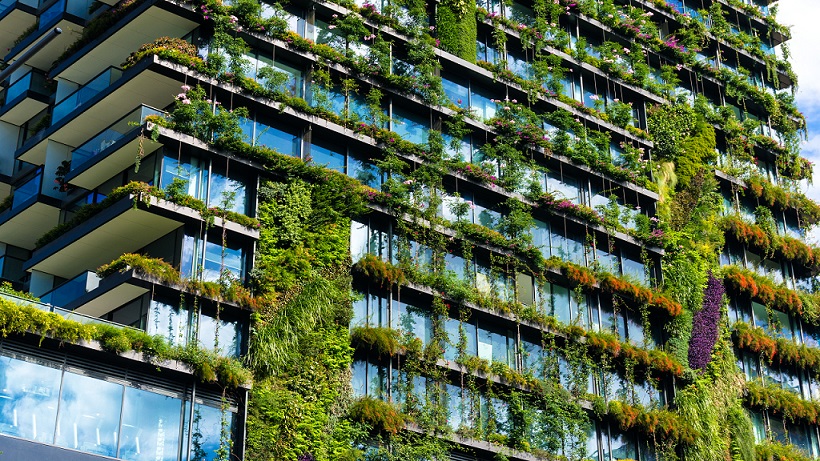
Earlier this year, research by McKinsey & Company highlighted 9 shifts that are likely to impact the global construction sector over the next 5 years. These disruptive trends, which include specialisation, increased value chain control and investment in human resources, are expected to radically change the way construction projects are delivered. What is most interesting is that sustainability stands at the top of the list; out of the 400 industry leaders surveyed by McKinsey, 90% believe sustainability in construction will be crucial going forward, and almost 80% expect this will happen in the next five years.
This shouldn’t come as a surprise. Buildings and construction are responsible for nearly 40% of all carbon emissions in the world. Energy used to heat, cool and light buildings account for roughly two-thirds of these emissions while the remaining one-third come from manufacturing materials and components. As several countries are now committed to net zero targets by 2050, these emissions will have to fall sharply in the next 30 years or so. The last report by the International Energy Agency declared that the sector was not on track, stating that building-related emissions rose to all-time highs in 2019.
Notwithstanding the sizeable impact that COVID-19 is having on the global construction industry, there are some signs of progress this year. For the first time, 40 of the world’s leading cement and concrete companies have announced a collective ambition to decrease the industry’s CO2 footprint by eliminating direct energy-related emissions, developing carbon capture techniques, and promoting the reuse and recycling of concrete.
Meanwhile, the use of low-carbon aluminium seems to be on the rise. On 31 August, the world’s first hydrogen-powered steel plant began operations in Sweden, which is seen as a ground-breaking effort to reduce emissions by replacing coal with hydrogen in the steelmaking process.
Other positive developments in recent months include the announcement of MACE’s new Smart Building project in Central London, and Landsec’s plans to develop the first commercial building rated net-zero carbon in the UK.
The subject also remains high on the agenda for policymakers. Reducing energy consumption of buildings is one of the flagship policies of the European Green Deal. This includes a requirement for all EU countries to establish detailed, long-term strategies that will support the development of highly energy-efficient and zero-carbon building stock by 2050. As part of this, the European Commission plans to rigorously assess its members’ policies this year. Furthermore, in July the UK government committed £3bn to retrofit both private and public buildings. Improvements in energy efficiency standards is also a part of the 2020 planning reform. It is likely that more targeted policies will be announced going forward and building regulations will get tougher.
"40 of the world’s leading cement and concrete companies have announced a collective ambition to decrease the industry’s CO2 footprint by eliminating direct energy-related emissions"
Private sector investment
At the same time, private investment has been a particularly strong lever. Estimates by the Climate Bonds Initiative suggest that out of the $258bn worth of green bonds issued globally in 2019, 30% went to the building sector, making it one of the largest industries for green proceeds allocation. Data covering the first half of 2020 shows a similar result.
Chances are that investment in environmentally sustainable buildings will deliver good financial returns. Analysis by JLL suggests that between 2016 and 2019, office buildings in Central London with energy performance certificates of A or B saw a rental premium of 10% compared to offices with lower ratings, while those with the BREEAM sustainable building standard were also subject to higher rents in the same period.
Back in Q1 2019, contributors to the RICS global surveys reported that while investor focus has shifted towards energy-efficient and carbon-neutral building designs, there is a long way to go before sustainability is at the forefront of mainstream investment decisions across the built environment sector. It is of some concern that around 40% of professionals working in the commercial real estate sector across the globe ranked climate risk factors as either not important or irrelevant for investors when making decisions. In the UK, almost 50% of respondents took this view.
Still, there have been some important advances. As part of our Q3 2020 Global Construction Monitor, the RICS Economics team will assess how sustainable and green initiatives are being used to complete projects, the use of circular practices in construction, as well as the significance of measuring embodied and operational carbon in projects and the impact this is currently having on the choice of materials and components. The results should offer more insights.
